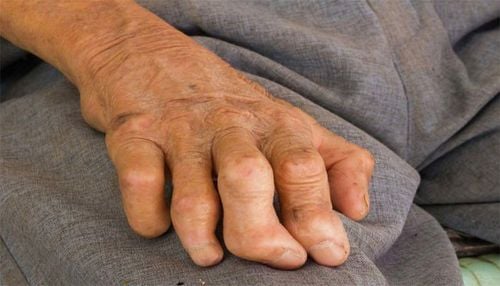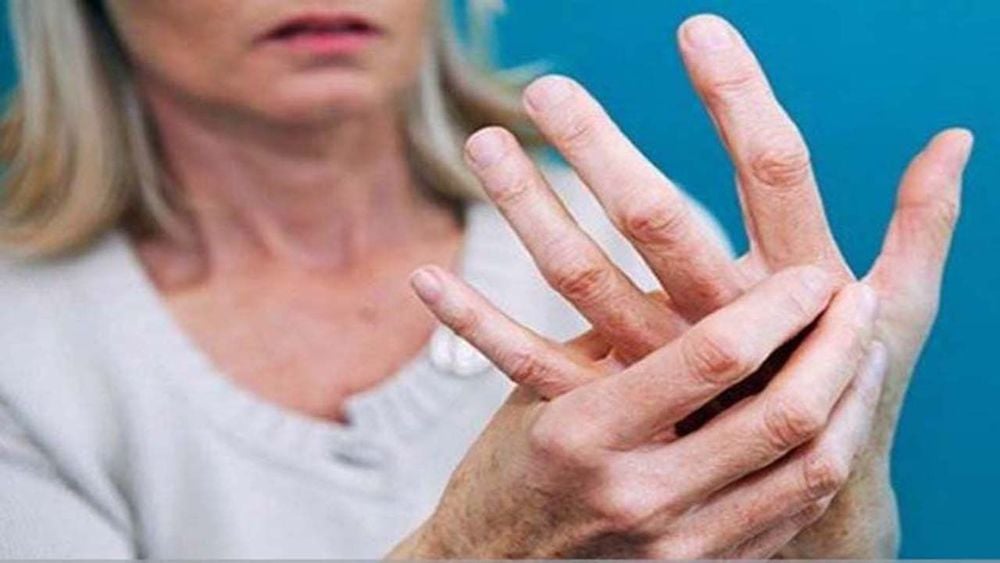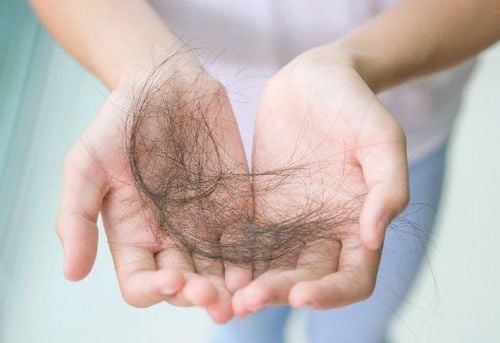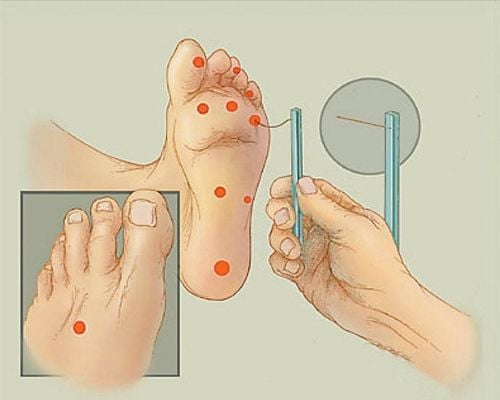This is an automatically translated article.
Leprosy is an infection caused by the bacteria Mycobacterium leprae. In the past, leprosy was contagious and devastating, but now we can control and treat it if diagnosed in time.
If left untreated, nerve damage can lead to paralysis of the hands and feet. In very severe cases, the person can experience multiple trauma due to the lack of sensation, eventually leading to the loss of toes and hands. Corneal ulcers and blindness can also occur if the facial nerve is affected. Other signs of advanced leprosy may include loss of eyebrows and nasal deformity due to a damaged septum. Early diagnosis and treatment of leprosy will help prevent disability. After starting treatment, the sick person will no longer be able to infect others.
Each year about 150 people in the United States and 250,000 people around the world are diagnosed with leprosy. In the past, leprosy was considered a highly contagious and devastating disease, but now we can control the disease and easily treat it if diagnosed in time. However, there are still many stigmas and stereotypes about the disease, and people suffering from it are often isolated and discriminated against in many places. We need to commit to combating stigma through education and improving access to treatment.

Bệnh phong hay còn có tên gọi khác là Hansen, một nhiễm trùng do vi khuẩn Mycobacterium leprae gây ra
2. What are the symptoms of leprosy? Symptoms mainly affect the skin, nerves, and mucous membranes. The disease includes the following typical symptoms:
Patches of skin that change color, often flat, may be numb and look pale (lighter than the surrounding skin); Development of nodules on the skin; Thick, hard, or dry skin; Painless ulcers on the soles of the feet; Painless swelling or lumps on the face or earlobes; Loss of eyebrows or eyelashes; Symptoms of nerve damage are numbness of the affected areas of skin, muscle weakness or paralysis (especially in the hands and feet); Eye problems that can lead to blindness when the facial nerves are affected; Symptoms caused by disease in the mucous membranes include nasal congestion , nosebleeds ; If left untreated, leprosy can get worse and cause the following complications:
Paralysis of hands and feet; Loss of fingers and toes; Chronic ulcer that does not heal on the bottom of the foot; Blind; Loss of eyebrows; Nose deformity; Nerve pain; Redness and pain around the affected area; Burning sensation on the skin; Erectile dysfunction ; CKD . 3. How is leprosy spread? This disease is not contagious. You can't get leprosy through casual contact with someone who has the disease, such as shaking hands or hugging, sitting next to each other on a bus, sitting together at meals. It is also not transmitted from mother to fetus during pregnancy and is not sexually transmitted.
It is not known exactly how leprosy is spread between people. Scientists now think this can happen when a person with leprosy coughs or sneezes and a healthy person breathes in droplets containing the bacteria. It takes long, close contact with a person with untreated leprosy for many months to develop the disease. According to the New England Journal of Medicine, an armadillo species native to the southern United States and Mexico can also carry the disease and then pass it on to humans.
Due to the slow growth of bacteria and the long time to develop signs of the disease, it is often difficult to find the source of the disease. According to the World Health Organization (WHO), the average incubation period for leprosy (the time from infection to the appearance of first symptoms) is 5 years. Symptoms may not appear for up to 20 years. Therefore, finding the source of the spread of leprosy is not an easy thing.

Nếu không được điều trị, bệnh phong có thể tiến triển nặng hơn và gây ra các biến chứng
4. How is leprosy treated? To confirm the diagnosis, your doctor will take a skin biopsy sample to look for bacteria under a microscope. You may also have tests to rule out other skin conditions.
Leprosy is treated with a combination of several antibiotics. Usually, 2 or 3 antibiotics are used at the same time. This is called multidrug therapy. This strategy helps prevent the development of antibiotic-resistant bacteria. Antibiotics used to treat leprosy include: Dapsone (Aczone), Rifampin (Rifadin), Clofazimine (Lamprene), Minocycline (Minocin), Ofloxacin (Ocuflux). In addition, your doctor may also prescribe anti-inflammatory drugs such as Aspirin (Bayer), Prednisone (Rayos) or Thalidomide. The course of treatment for shingles will last for many months and can be up to 1 to 2 years. Note that you should not take thalidomide if you are or could become pregnant because it can cause serious birth defects.
Leprosy can be cured if it is completely treated if you follow the doctor's instructions. If you are being treated for leprosy, the following points should be kept in mind:
Tell your doctor if you have numbness or loss of sensation in certain parts of your body. This may be due to nerve damage. With loss of sensation, injuries such as burns may go unnoticed because the patient may not feel the pain. Therefore take extreme care to ensure that parts of the body are not injured or burned. Take antibiotics according to the correct course of treatment. If you stop the medicine earlier than prescribed, the bacteria can start to grow again and the disease can come back, or even get worse. Contact your doctor if the affected patches of skin become red and painful, the nerves swell, or there is a fever, as these could be leprosy complications. This could be a sign that more aggressive treatment is needed. Medicines used during treatment kill the bacteria that cause leprosy. They can cure the disease and prevent it from getting worse, but they cannot reverse nerve damage or physical disfigurement that occurred before diagnosis. So it is very important that the disease is diagnosed as early as possible, before any permanent nerve damage occurs.
Please dial HOTLINE for more information or register for an appointment HERE. Download MyVinmec app to make appointments faster and to manage your bookings easily.
References: healthline.com/health/leprosy, cdc.gov













